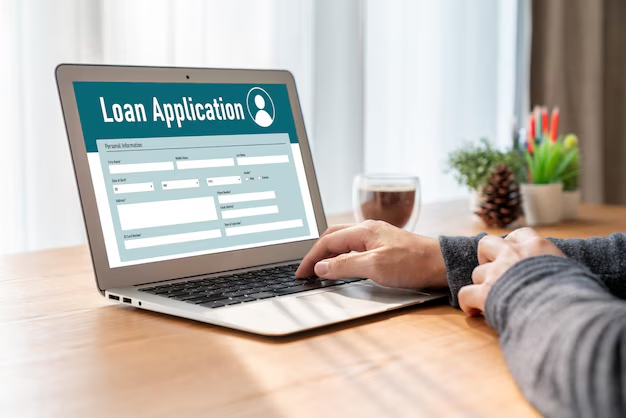Unlocking Your 403(b): Exploring Borrowing Options and What You Need to Know
When unexpected financial challenges arise, the ability to access a cushion within your retirement savings might seem like a viable solution. Among the varied retirement savings plans available, the 403(b)—tailored primarily for employees of public schools and certain non-profits—shares some similarities with the more widely known 401(k). Yet, many are left wondering, "Can I borrow against my 403(b)?" This question opens the door to a discussion about the intricacies, opportunities, and potential risks involved in borrowing against your 403(b). Let's dive into this topic to clarify and guide your understanding.
Understanding the 403(b) Plan
What is a 403(b) Plan?
A 403(b) plan is a tax-advantaged retirement savings vehicle specifically designed for employees of public schools, certain non-profits, and other tax-exempt organizations. These plans allow participants to contribute a portion of their salary into long-term savings, often with the advantages of either tax-deferred or Roth options.
Key Benefits of a 403(b)
- Tax Advantages: Contributions are typically made pre-tax, which reduces taxable income.
- Tax-Deferred Growth: Investments grow tax-free until withdrawal, usually at retirement.
- Employer Contributions: Some employers offer matching contributions, boosting savings potential.
Can You Borrow Against Your 403(b)?
The direct answer to the question is that it depends. While borrowing from your 403(b) is an option in many cases, it hinges on certain factors including the rules established by your plan provider.
Key Considerations
- Plan Rules: Not all 403(b) plans support loans, as each plan may be governed by unique rules set by the employer or plan administrator.
- Loan Limits: If allowed, loans are typically capped at the lesser of $50,000 or 50% of your vested account balance, subject to certain adjustments if you have other outstanding loans.
- Repayment Terms: These loans usually need to be repaid with interest within five years, although loans used for home purchases might offer longer terms.
The Process of Borrowing from a 403(b)
Steps to Take
- Consult Your Plan Administrator: They will provide specific details about whether loans are available under your plan and the associated terms.
- Determine Loan Eligibility: Ensure you meet eligibility criteria based on your plan's guidelines and your vested balance.
- Understand the Costs: Analyze interest rates and fees associated with the loan to weigh the economic impact.
- Application Process: Complete necessary forms or electronic submissions as required by your provider.
A Strategic Decision
Borrowing against your 403(b) isn't merely about accessing funds; it's about understanding the broader implications:
- Interest and Fees: Unlike traditional loans, interest paid on your 403(b) loan goes back into your account rather than to a lender, albeit with potential administrative fees.
- Risk of Default: Failing to repay could result in the outstanding balance being taxed and possibly penalized as an early withdrawal unless you meet qualifying exceptions.
Weighing the Pros and Cons
Before you decide to borrow from your 403(b), it's crucial to evaluate both the advantages and disadvantages to ensure a well-informed decision.
Pros
- 🏦 Access to Funds: Provides a means to access funds in urgent financial situations without immediately impacting taxable income.
- ➿ Repayment Flexibility: Essentially borrowing from yourself, repaying with interest, which benefits your retirement savings.
- 🏠 Home Purchase Aid: Potentially longer repayment periods for buying a home.
Cons
- 📉 Opportunity Cost: The borrowed amount isn't invested, possibly missing out on market growth, which could significantly impact retirement savings.
- ⏳ Repayment Obligation: Failure to repay could lead to penalties and additional taxes.
- 📊 Retirement Impact: Reducing your retirement nest egg today could lead to less financial security tomorrow.
Summary of Key Points
Here's a concise summary of the important aspects related to borrowing from your 403(b):
| Aspect | Details |
|---|---|
| Plan Availability | Confirm with your employer or plan administrator if loans are permissible under your 403(b). |
| Amount Limits | Typically limited to the lesser of $50,000 or 50% of vested balance. |
| Repayment Terms | Standard term is usually five years, with exceptions for home purchases. Interest rates and potential fees also apply. |
| Risks Involved | Default risk resulting in potential taxes and penalties, along with the impact on future retirement savings. |
Alternatives to Borrowing from Your 403(b)
If your 403(b) plan does not allow loans or if you're seeking different options to meet your financial needs, consider these alternatives:
Personal Loan
A traditional personal loan from a bank or credit union can provide a lump sum. While this option typically involves competitive interest rates, it does not tap into retirement savings.
Home Equity Loan or Line of Credit
For homeowners, borrowing against home equity can offer larger loan amounts at lower interest rates, leveraging the value built up in your property.
Emergency Savings
Relying on a well-stocked emergency fund could mitigate the immediate need to borrow and protect retirement assets.
Reflecting on the Decision
Deciding to borrow from your 403(b) isn't just about the present. It's about assessing long-term goals and understanding financial habits to ensure your strategy aligns with your future retirement plans. Consider your current situation, potential life changes, and reassess your financial priorities to make the best choice for your individual circumstances.
These insights facilitate a comprehensive view that enables informed decisions, equipping you with the knowledge needed to navigate the complexities of finances involving a 403(b) plan. Remember, financial decisions today echo in your retirement tomorrow. Make them wisely!

Related Topics
- Are 403b Contributions Tax Deductible
- Can a 401k Be Rolled Into a 403b
- Can a 403b Be Rolled Into An Ira
- Can I Borrow From My 403b
- Can I Borrow From My 403b Without Penalty
- Can I Contribute To 403b And 457b
- Can I Withdraw From 403b While Still Employed
- Can I Withdraw From My 403b To Buy a House
- Can You Max 403b And 457
- Can You Roll 401k Into 403b